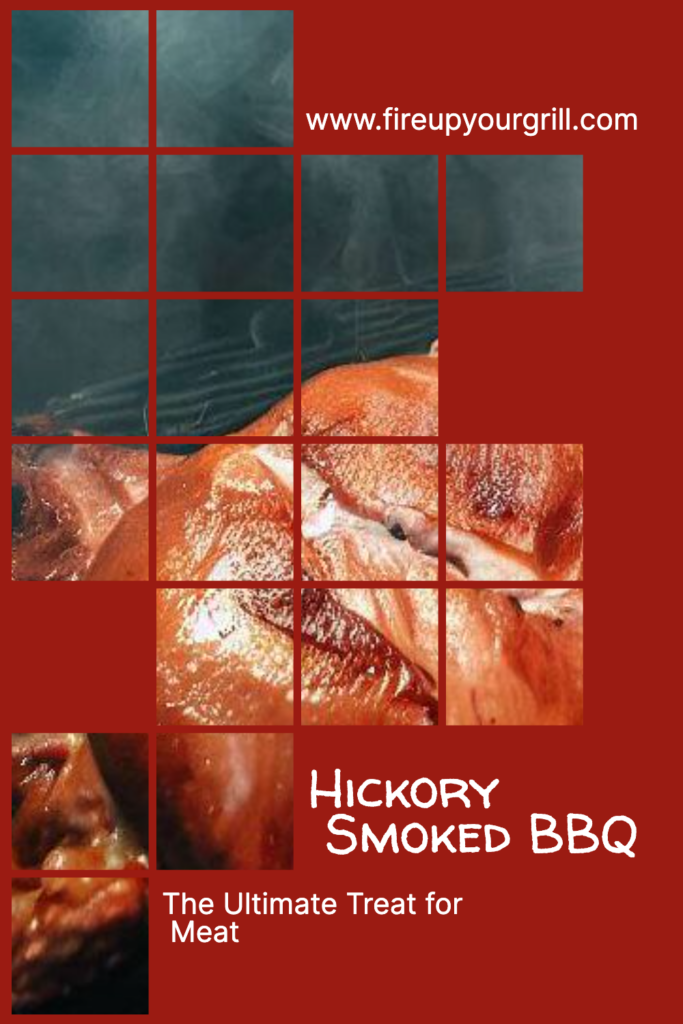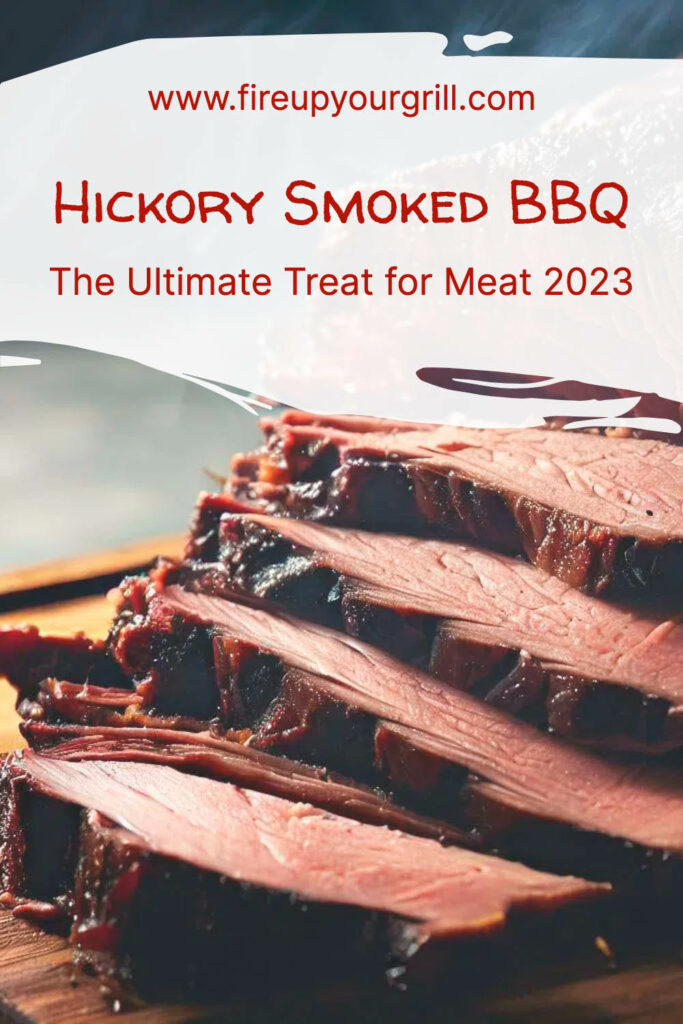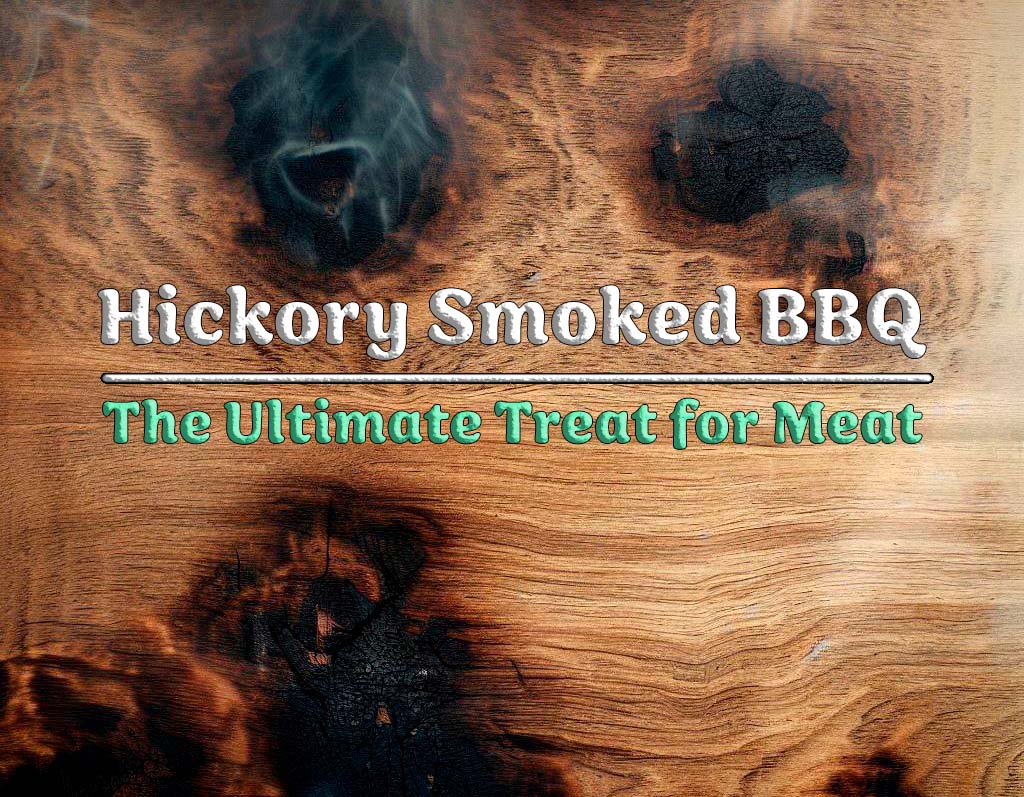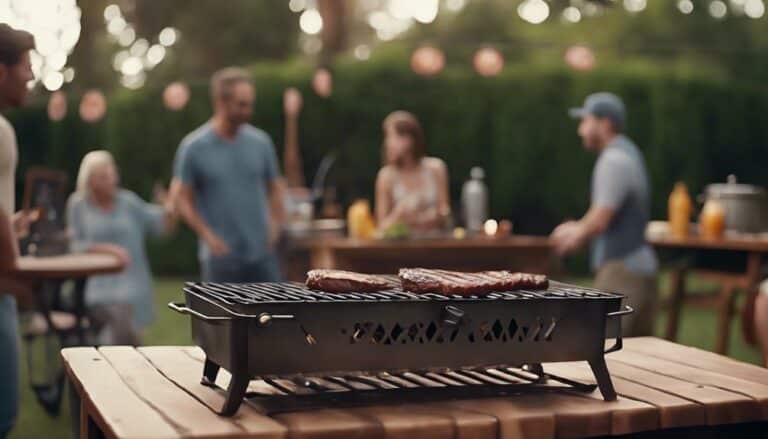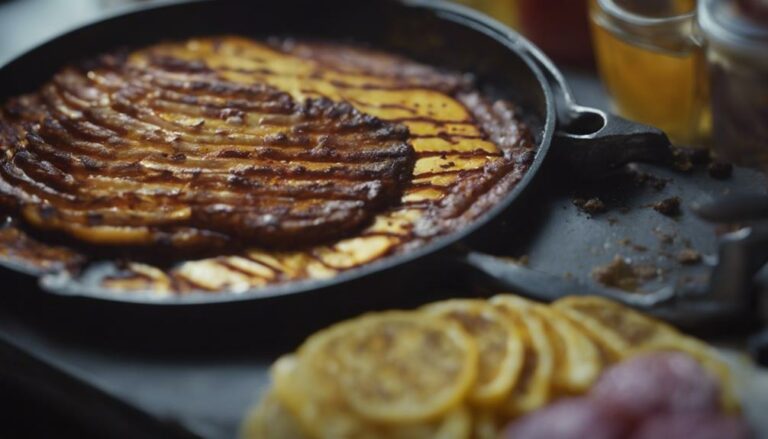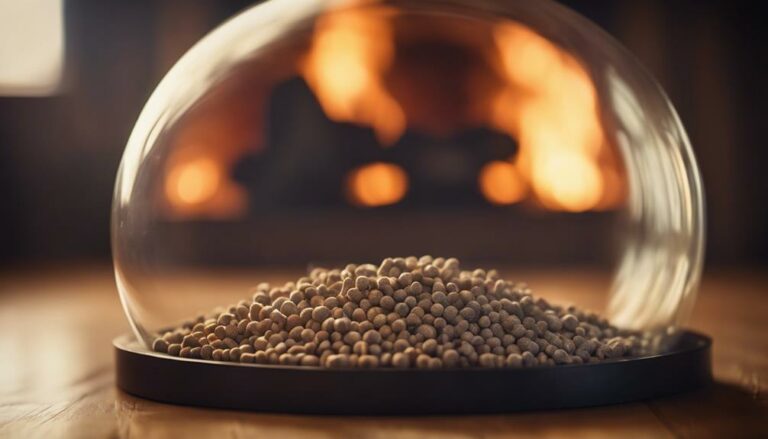Hickory-smoked BBQ refers to a cooking technique and flavor profile commonly associated with American barbecue. It involves slow-cooking meat, typically pork or beef, over a fire or in a smoker using hickory wood as the primary source of the smoke.
Table of Contents
Introduction to Hickory Smoked BBQ
The process of hickory smoking infuses the meat with a distinctive, smoky flavor and creates a tender and juicy texture. The use of hickory wood imparts a rich, slightly sweet, and robust taste to the meat, enhancing its overall flavor profile. Hickory wood enhances the flavor, color, and aroma of smoked foods in several ways according to a scientific study.
To prepare hickory smoked BBQ, the meat is usually seasoned with a dry rub or marinade to add additional flavors and then slow-cooked over low heat for several hours. The slow cooking process allows the meat to become tender while allowing the hickory smoke to permeate it, giving it that signature smoky taste.
Hickory smoked BBQ is popular in various regional styles of American barbecue, including Kansas City, Texas, and Carolina styles. Each style has its own unique variations in terms of sauce, seasonings, and cooking methods, but the hickory smoke remains a common element across many regional styles.
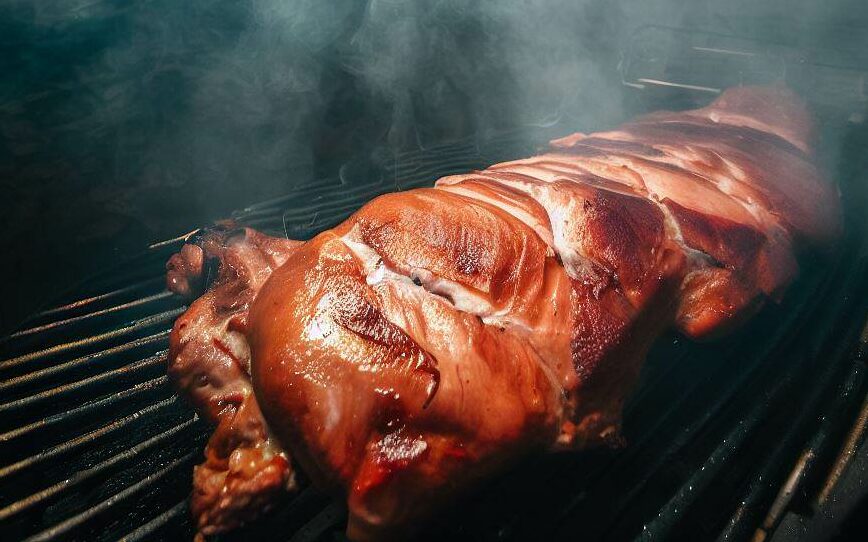
The result of hickory smoking is often mouthwatering and savory dishes such as hickory-smoked ribs, pulled pork, brisket, or chicken. These dishes are typically served with barbecue sauce, which can range from sweet and tangy to spicy, complementing the smoky flavors of the meat.
Hickory smoked BBQ has become a celebrated culinary tradition in the United States and is enjoyed by BBQ enthusiasts and food lovers around the world. It has also influenced various global barbecue styles, as the rich flavors and slow-cooking techniques have been adapted and incorporated into different cultural cuisines.
Hickory Smoked BBQ: A Guide for Beginners and Experts
If you love barbecue, you have probably heard of hickory wood. It is one of the most popular and versatile types of wood for smoking meat and other foods. But what makes hickory wood so special? How do you use it correctly? And what are some of the best meats to smoke with hickory wood? In this article, we will answer these questions and more. Whether you are a beginner or an expert, you will find some useful tips and tricks to make your hickory smoked BBQ even better.
What is Hickory Wood and Why is it Popular for Smoking?
Hickory wood is a type of hardwood that comes from the hickory tree. There are 18 different species of hickory trees, most of which are native to eastern North America. Some hickory trees produce nuts, such as pecans, which have a mild and sweet flavor.
Hickory wood is popular for smoking because it has a strong and distinctive flavor that complements many types of meat. It imparts a smoky, sweet, slightly nutty flavor that is similar to bacon. Hickory wood also adds a dark color and a rich aroma to smoked foods.
Hickory wood is especially common in Midwestern and Southeastern BBQ styles, where it is used to smoke pork, beef, chicken, turkey, and wild game. Hickory wood can also be used to smoke cheese, nuts, salmon, and other foods.
How Does Hickory Wood Enhance the Flavor, Color, and Aroma of Smoked Foods?
Hickory wood enhances the flavor, color, and aroma of smoked foods in several ways:
- Hickory wood has a high level of lignin, a natural compound that gives wood its strength and rigidity. When lignin burns, it produces aromatic compounds called phenols that give smoked foods their smoky flavor.
- Hickory wood also contains sugars that caramelize when heated, adding sweetness and complexity to smoked foods.
- Hickory wood has a high moisture content, which helps keep smoked foods moist and tender.
- Hickory wood produces a dark smoke that penetrates deeply into smoked foods, giving them a rich color and a smoky crust.
What are the Different Forms of Hickory Wood and How to Use Them?
Hickory wood comes in various forms, such as planks, sticks, chunks, chips, pellets, liquid smoke, and infused salt. Each form has its own advantages and disadvantages depending on your smoker or recipe.
- Hickory planks are thin pieces of wood that are soaked in water and then placed on top of a grill or in an oven with food on them. They add a mild hickory flavor to food without producing much smoke. They are best for smoking cheese, fish, or vegetables.
- Hickory sticks are split logs that are used as fuel in offset smokers or fire pits. They burn slowly and steadily, producing a lot of heat and smoke. They are best for smoking large cuts of meat that require long cooking times.
- Hickory chunks are large pieces of wood that are soaked in water and then added to charcoal or gas grills or electric smokers. They produce more smoke than chips but less than sticks. They are best for smoking medium-sized cuts of meat that require moderate cooking times.
- Hickory chips are small pieces of wood that are soaked in water and then added to charcoal or gas grills or electric smokers. They produce a lot of smoke quickly but burn out fast. They are best for smoking small cuts of meat that require short cooking times.
- Hickory pellets are compressed sawdust that are used in pellet smokers or grills. They burn cleanly and efficiently, producing consistent heat and smoke. They are best for smoking any type of meat or food that requires precise temperature control.
- Hickory liquid smoke is a concentrated liquid that contains natural smoke flavor extracted from hickory wood. It can be added to sauces, marinades, rubs, or directly to food after cooking. It adds a hint of hickory flavor without producing any smoke. It is best for enhancing the flavor of cooked food or adding smokiness to food that cannot be smoked.
You can also get liquid hickory smoke at the store and add it after your food is finished (liquid smoke flavorings from hickory and other tropical hardwoods). - Hickory-infused salt is salt mixed with hickory smoke powder or liquid smoke. It can be used as a seasoning or finishing salt for any type of food. It adds a touch of hickory flavor and saltiness without producing any smoke. It is best for adding complexity and depth to food.
What are Some of the Best Meats to Smoke with Hickory Wood?
Hickory wood works well with most types of meat, but some are more suitable than others. Here are some examples:
- Pork is one of the best meats to smoke with hickory wood because it has a rich fat content that absorbs the smoky flavor well. Pork loin, pork shoulder (used for pulled pork), pork ribs (spare ribs or baby back ribs), ham (cured or fresh), bacon (cured or uncured), sausage (fresh or smoked), chops (bone-in or boneless), tenderloin (whole or sliced), etc.
- Beef is another great meat to smoke with hickory wood because it has a strong flavor that can stand up to the intense smokiness. Beef brisket (flat or point), beef chuck (used for pot roast or shredded beef), beef ribs (short ribs or back ribs), steak (ribeye, sirloin, strip, etc.), roast (eye round, rump roast
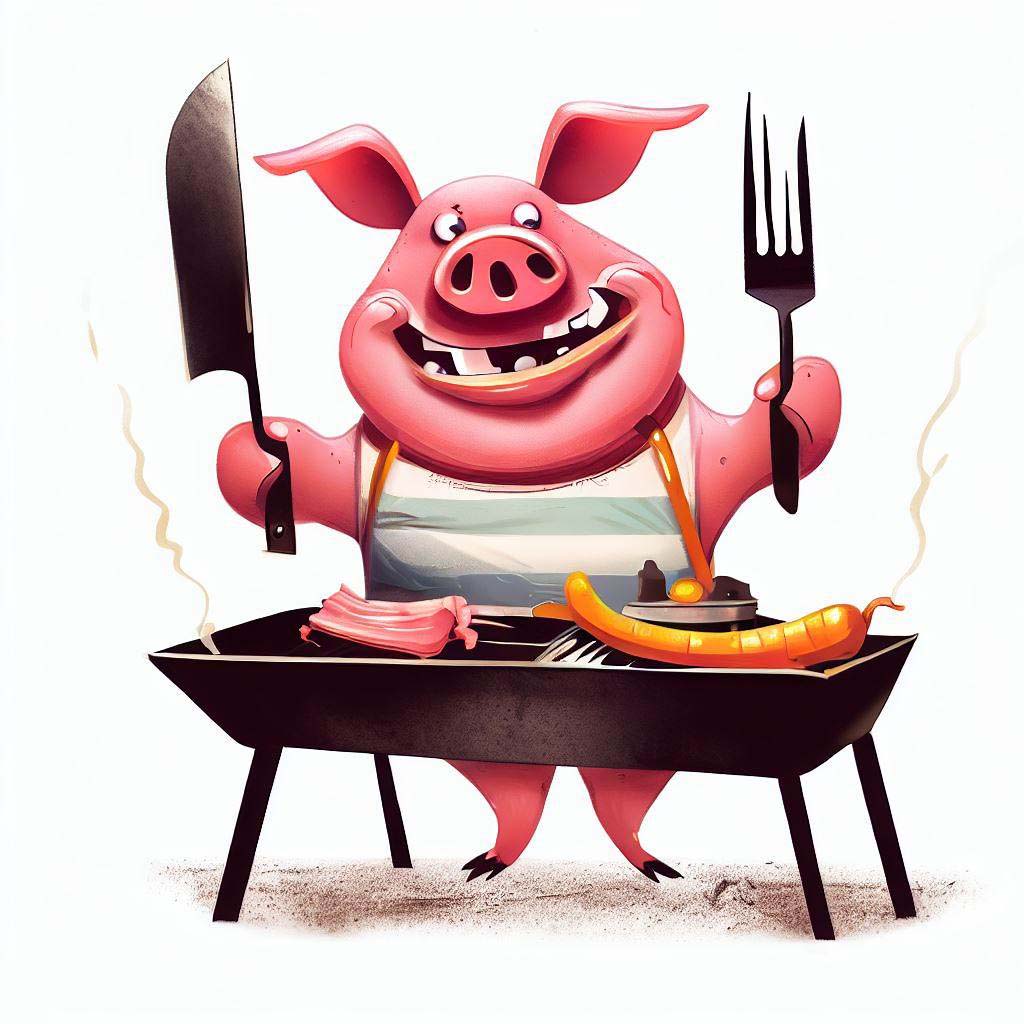
Hickory-Smoked BBQ: Embrace the Flavors of the Grill
Barbecuing is an art that transcends mere cooking. It’s a sensory experience that tantalizes our taste buds and elicits pure joy. As a barbecue enthusiast and self-proclaimed advisor in the realm of smoky goodness, I invite you to embark on a flavorful journey with me as we explore the world of hickory-smoked BBQ.
The irresistible allure of hickory-smoked BBQ
There’s something undeniably alluring about the aroma of hickory smoke wafting through the air, beckoning us to indulge in its mouthwatering embrace. Hickory-smoked BBQ has become a cherished tradition, captivating meat lovers across the globe with its rich flavors and tender textures.
Understanding the basics of hickory smoking
To fully appreciate the wonders of hickory-smoked BBQ, let’s delve into the fundamentals. Hickory smoking is a slow-cooking technique that involves infusing meat with the distinct smokiness of hickory wood. This imparts a delightful flavor profile, setting it apart from other barbecue styles.
Why Choose Hickory for Smoking
- Embracing the smoky flavor
The heart and soul of hickory-smoked BBQ lies in its remarkable smoky flavor. The sweet and robust essence of hickory wood takes center stage, creating a symphony of tastes that dance on your palate. It’s a sensory experience like no other, with each bite delivering a smoky delight that leaves you craving more.
- Hickory wood’s versatility
One of the reasons hickory has gained popularity among pitmasters is its versatility. It pairs exceptionally well with various types of meat, from succulent ribs to tender pulled pork. Whether you’re a fan of beef, pork, or poultry, hickory smoking can elevate your barbecue game to new heights.
- The perfect balance of sweet and robust
Hickory wood strikes a harmonious balance between sweetness and robustness, making it an ideal choice for BBQ enthusiasts seeking a well-rounded flavor. The inherent sweetness of hickory imparts a delightful undertone to the meat, while its robust nature adds depth and complexity.
Getting Started with Hickory-Smoked BBQ
- Choosing the right meat for smoking
The foundation of any remarkable barbecue experience lies in selecting the right meat. When it comes to hickory-smoked BBQ, ribs, pork shoulder, and beef brisket are popular choices due to their ability to absorb and complement the smoky flavors.
- Preparing the meat with a dry rub
Before the meat meets the smoker, it’s crucial to give it some love and attention. Applying a carefully crafted dry rub enhances the flavors and creates a beautiful crust. The blend of spices, herbs, and a touch of sweetness adds depth to the final product.
- Optimal marinating techniques
While hickory smoking alone can infuse the meat with incredible flavors, marinating can take it to the next level. A well-crafted marinade not only tenderizes the meat but also introduces additional layers of taste that harmonize with the hickory smoke.
The Art of Hickory Smoking
- Selecting the right hickory wood
When it comes to hickory smoking, the choice of wood plays a crucial role. Opting for high-quality hickory chunks ensures a consistent and satisfying smoky flavor. Soak the wood in water beforehand to prevent it from burning too quickly and to promote a steady release of smoke.
- The low and slow cooking method
Hickory smoking is all about patience and allowing the flavors to develop over time. Employ the low and slow cooking method, maintaining a steady temperature between 225°F and 250°F (107°C and 121°C). This gentle heat ensures tender meat and allows the hickory smoke to work its magic.
- Setting up the smoker for success
To achieve barbecue greatness, you need a well-prepared smoker. Whether you prefer charcoal, electric, or wood smokers, ensure they are clean and properly set up. Maintain a consistent heat source and a steady flow of hickory smoke throughout the cooking process.
- Monitoring temperature and smoke
Barbecue mastery lies in understanding the delicate balance between temperature and smoke. Use a reliable thermometer to monitor the internal temperature of the meat, ensuring it reaches the desired level of tenderness. Keep an eye on the smoke levels, ensuring a consistent and subtle infusion of hickory aroma.
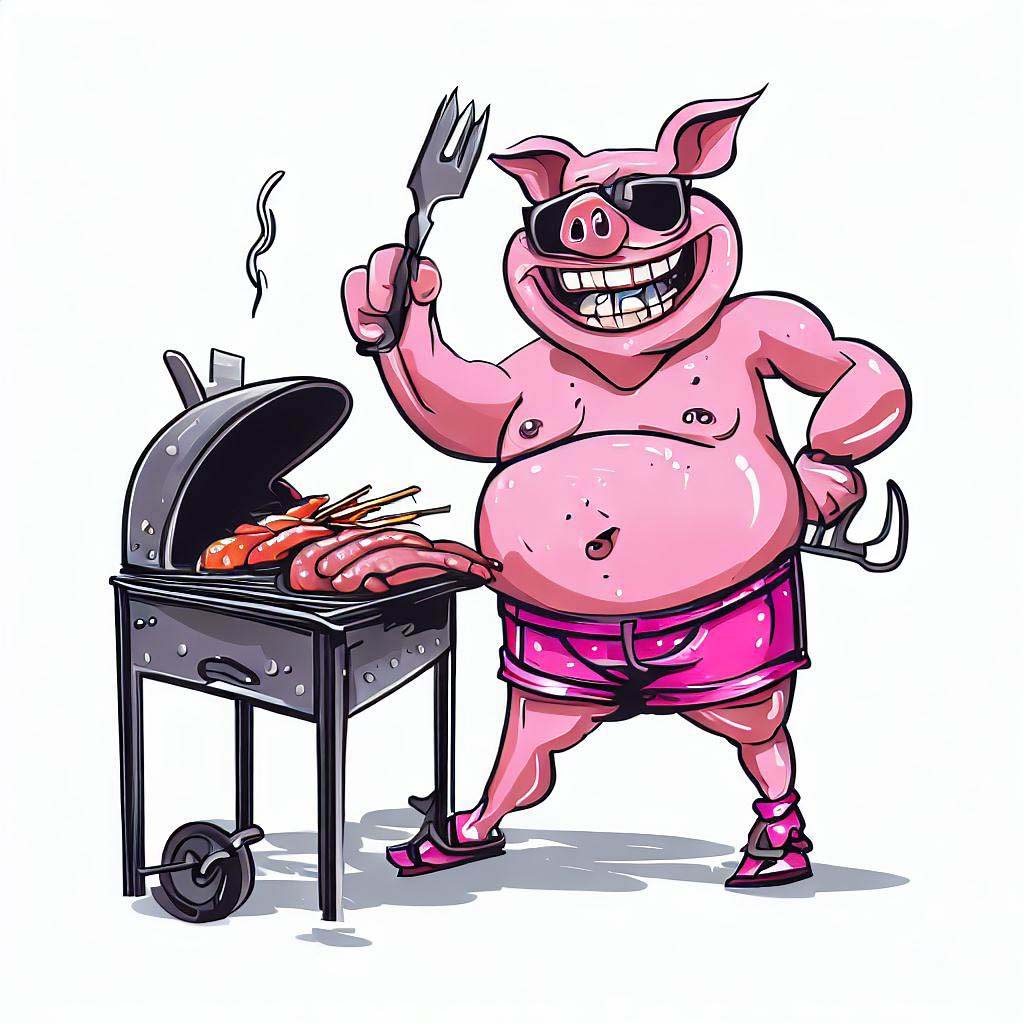
Hickory-Smoked BBQ Recipes and Techniques
- Mouthwatering hickory-smoked ribs
Ribs and hickory smoke are a match made in barbecue heaven. Dive into the world of succulent baby back ribs or meaty spare ribs, meticulously seasoned and slow-cooked to perfection. Let the hickory smoke transform these ribs into tender, flavorful delights that will have your guests begging for more.
- Perfecting the art of pulled pork
Pulled pork is a staple in the realm of barbecue, and hickory smoking takes it to new heights. Season a pork shoulder with a tantalizing rub, let it bask in the hickory smoke for hours, and witness the magic unfold. The result? A melt-in-your-mouth masterpiece that will make your taste buds sing.
- Juicy and tender hickory-smoked brisket
Brisket, the crown jewel of barbecue, demands the utmost attention and care. With hickory smoking, you can achieve a bark-infused, tender brisket that will leave you and your guests in awe. Embrace the challenge, hone your skills, and savor the rewards of a beautifully smoked hickory brisket.
Serving and Pairing Suggestions
- Pairing BBQ sauces with hickory-smoked meats
Hickory-smoked BBQ is incomplete without the perfect sauce to complement the flavors. Whether you prefer tangy and vinegar-based Carolina-style sauce, the molasses-infused sweetness of Kansas City sauce, or the bold and spicy notes of Texas-style sauce, the choice is yours. Experiment with different sauces to find your perfect pairing.
- Delicious sides to accompany your BBQ feast
No barbecue gathering is complete without an array of delectable side dishes. From classic coleslaw to creamy mac and cheese, smoky baked beans to buttery cornbread, the options are endless. These sides provide a delightful contrast to the smoky richness of hickory-smoked meats, ensuring a well-rounded and satisfying meal.
- Beverage recommendations for BBQ parties
To quench your thirst and enhance the overall barbecue experience, consider the perfect beverage pairings. Crisp and refreshing craft beers, smoky bourbon or whiskey, or even a fruit-infused pitcher of iced tea can elevate the flavors and create a harmonious symphony of taste.
Common Pitfalls and Troubleshooting
- Avoiding overly smoky or bitter flavors
While hickory smoke adds depth and character to BBQ, too much smoke can overpower the meat, leading to an unpleasant bitterness. Moderation is key. Adjust the amount of hickory wood and monitor the smoke levels to strike the perfect balance and avoid any culinary misfortunes.
- Overcoming temperature and timing challenges
Barbecuing is a journey that requires adaptability and patience. Challenges such as fluctuating temperatures and unexpected delays can arise. Embrace the opportunity to hone your skills and make adjustments along the way. Remember, the path to mastery is paved with perseverance.
How to Prepare and Smoke Hickory Smoked Brisket
Brisket is one of the most popular meats to smoke with hickory wood because it has a strong flavor and a tough texture that benefit from the low and slow cooking method. Brisket is a large cut of beef that comes from the chest of the animal. It consists of two muscles: the flat and the point. The flat is leaner and more uniform, while the point is fattier and more irregular.
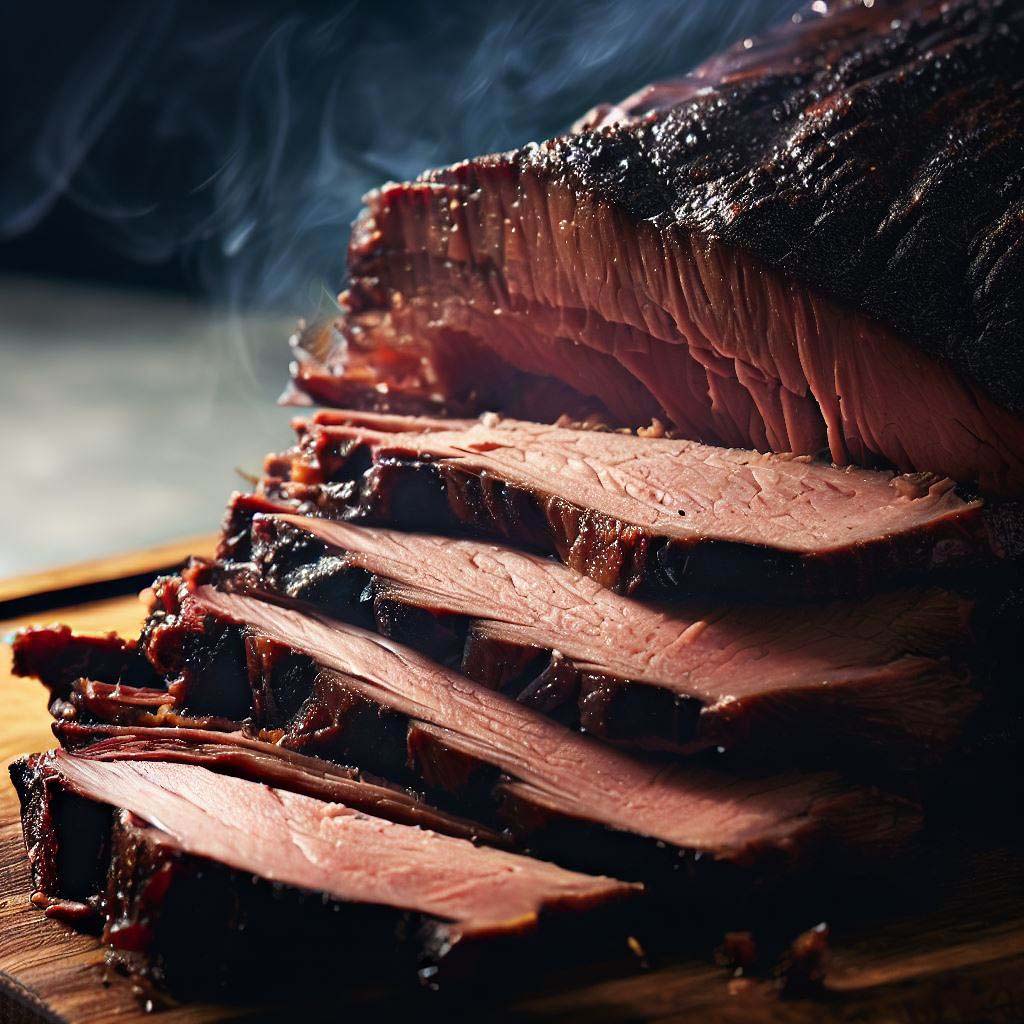
To prepare and smoke a hickory-smoked brisket, you will need:
- A whole packer brisket (about 12-15 pounds)
- A sharp knife and a cutting board
- A spice grinder or a mortar and pestle
- A mixing bowl
- A shaker bottle or a dredge
- A smoker
- Hickory wood sticks, chunks, or pellets
- A meat thermometer
- Butcher paper
- A large platter or a cutting board
- A chef’s knife
Here are the steps to follow:
- Trim the brisket. Trim off any excess fat or silver skin from the brisket, leaving about 1/4 inch of fat on the top side. You can also separate the point from the flat if you prefer, or leave them attached. Trimming the brisket will help it cook more evenly and absorb more smoke flavor.
- Season the brisket. To make a simple Texas-style rub, toast 1 teaspoon of cumin seeds, 1/2 teaspoon of red chili flakes, 1 teaspoon of black peppercorns, and 1 teaspoon of fennel seeds in a dry skillet over low heat until fragrant. Grind them to a fine powder with 2 teaspoons of demerara sugar in a spice grinder or a mortar and pestle. Transfer to a mixing bowl and add 2 teaspoons of caster sugar, 1 teaspoon of paprika, 1 teaspoon of onion powder, 1 teaspoon of garlic powder, 1 teaspoon of mustard powder, and 1 teaspoon of salt. Mix well and transfer to a shaker bottle or a dredge. Season the brisket generously on all sides with the rub and let it sit at room temperature for up to an hour.
- Preheat the smoker. Preheat your smoker to 225 degrees F and load it with your favorite hickory wood logs, chunks, or pellets. You want to maintain a steady temperature and constant smoke throughout the cooking process.
- Smoke the brisket. Place the brisket on the smoker, fat-side up, over indirect heat. Close the lid and let it smoke for about 10 hours, or until the outside is a dark mahogany color. Spritz the brisket with water or apple juice every hour to keep it moist and prevent it from drying out.
- Wrap the brisket. When the brisket reaches an internal temperature of about 165 degrees F, it will hit a stall where the temperature stops rising for several hours. This is normal and expected, but you can speed up the process by wrapping the brisket in butcher paper. This will help retain moisture and heat without affecting the bark or flavor too much. Return the wrapped brisket to the smoker and continue to cook for another 2-3 hours, or until it reaches an internal temperature of about 200 degrees F.
- Rest the brisket. Once the brisket is done, remove it from the smoker and let it rest for at least 30 minutes before slicing. This will allow the juices to redistribute and make the meat more tender and juicy.
- Slice and serve the brisket. Unwrap the brisket and transfer it to a large platter or a cutting board. Use a sharp chef’s knife to slice across the grain into thin slices. You can separate the point from the flat if you haven’t done so before and slice them separately. Serve your hickory smoked brisket with your favorite BBQ sauce, sides, and drinks.
Tips and Tricks for Hickory Smoking
Hickory smoking can be fun and rewarding, but it also requires some skill and patience. Here are some tips and tricks to help you achieve perfect results every time:
- Choose a good quality brisket that has plenty of marbling (fat within the muscle) and a thick fat cap (fat on top of the muscle). This will ensure more flavor and juiciness than a leaner cut.
- Don’t over-trim your brisket. Leave some fat on both sides to protect the meat from drying out and add flavor.
- Don’t over-season your brisket. A simple salt-and-pepper rub is enough to enhance the natural flavor of beef without overpowering it.
- Don’t over-smoke your brisket. Hickory wood has a strong flavor that can become bitter if used too much or too long. Use enough wood to produce a thin blue smoke that gently kisses your meat, not a thick white smoke that chokes it.
- Don’t over-wrap your brisket. Wrapping your brisket in butcher paper can help you overcome the stall and speed up cooking time, but don’t do it too early or too tightly. You want to preserve some airflow around your meat to maintain a good bark (crust) formation.
- Don’t over-cook your brisket. The ideal temperature for brisket is between 195-205 degrees F when probed with a thermometer in several places. If you go beyond that range, you risk drying out your meat or making it mushy.
- Don’t over-slice your brisket. Slice your brisket only when you are ready to serve it, not before. Slicing exposes more surface area to air, which can cause your meat to lose moisture and flavor quickly.
Conclusion: Embrace the art of hickory smoked BBQ
Hickory smoked BBQ is more than just a culinary adventure—it’s a celebration of flavors, a testament to patience, and a gathering of friends and family. It doesn’t have to be National BBQ Day. With hickory wood as your ally, you can create mouthwatering feasts that will leave lasting memories. So, fire up your smoker, let the hickory smoke weave its magic, and savor the unrivaled delights of hickory-smoked BBQ.
Hickory smoked BBQ is one of the most delicious ways to enjoy a barbecue at home. Hickory wood adds a smoky, sweet, slightly nutty flavor that complements many types of meat, especially beef brisket.
Hickory smoking can be challenging but rewarding if you follow some tips and tricks along the way.
We hope this guide has helped you learn more about hickory smoking and inspired you to try it yourself.
Happy smoking!
FAQs
Here are some frequently asked questions about hickory smoking:
What is hickory wood?
Hickory wood is a type of hardwood that comes from hickory trees native to eastern North America.
Why is hickory wood popular for smoking?
Hickory wood is popular for smoking because it has a strong flavor that enhances many types of meat.
How do I use hickory wood for smoking?
You can use hickory wood in various forms, such as planks, sticks, chunks, chips, pellets, liquid smoke, and infused salt. Each form has its own advantages and disadvantages depending on your smoker or recipe.
How long does it take to smoke ribs with hickory wood?
The cooking time for hickory-smoked ribs can vary depending on factors like the thickness of the ribs, the temperature maintained in the smoker, and personal preferences. Generally, it takes approximately 4 to 6 hours to smoke ribs with hickory wood at a temperature of around 225°F to 250°F (107°C to 121°C). However, it’s important to monitor the internal temperature of the meat and ensure it reaches a safe level of doneness.
Can I use hickory chips instead of chunks?
Yes, you can use hickory chips as an alternative to chunks for smoking. Hickory chips are smaller in size and are commonly used when smoking on a gas grill or for shorter cooking sessions. They ignite quickly and produce smoke faster than chunks, but they may burn out more quickly as well. If using hickory chips, it’s advisable to soak them in water for about 30 minutes before placing them on the heat source to slow down the burning process.
Is hickory smoking suitable for fish and poultry?
Hickory smoking can work well for fish and poultry, although it’s essential to be mindful of the intensity of the smoke. Fish and poultry have milder flavors compared to red meat, so hickory smoke can easily overpower them. It’s recommended to use a lighter hand with hickory when smoking fish or poultry to avoid overwhelming the delicate flavors. Alternatively, you can try mixing hickory with milder woods like apple or cherry to achieve a more balanced and subtle smoky profile.
What type of hickory wood is best for smoking?
Among the various hickory species, the most commonly used for smoking is the Shagbark Hickory (Carya ovata). It offers a well-balanced combination of sweetness and robustness, making it a popular choice for barbecue enthusiasts. However, other hickory species like Pecan Hickory (Carya illinoinensis) and Shellbark Hickory (Carya laciniosa) can also be used for smoking and impart their unique flavors. Ultimately, personal preference plays a significant role, so feel free to experiment with different hickory wood types and discover your favorite.
Can I hickory smoke on a gas grill?
Yes, you can hickory smoke on a gas grill. While gas grills are primarily designed for direct heat cooking, you can still achieve a smoky flavor by using a smoker box or creating a makeshift foil pouch for the hickory wood chips. Soak the hickory chips in water for about 30 minutes, then place them in the smoker box or pouch and position it over one of the burners. As the grill heats up, the hickory chips will start to smolder and produce smoke, infusing your food with that delicious hickory aroma.
